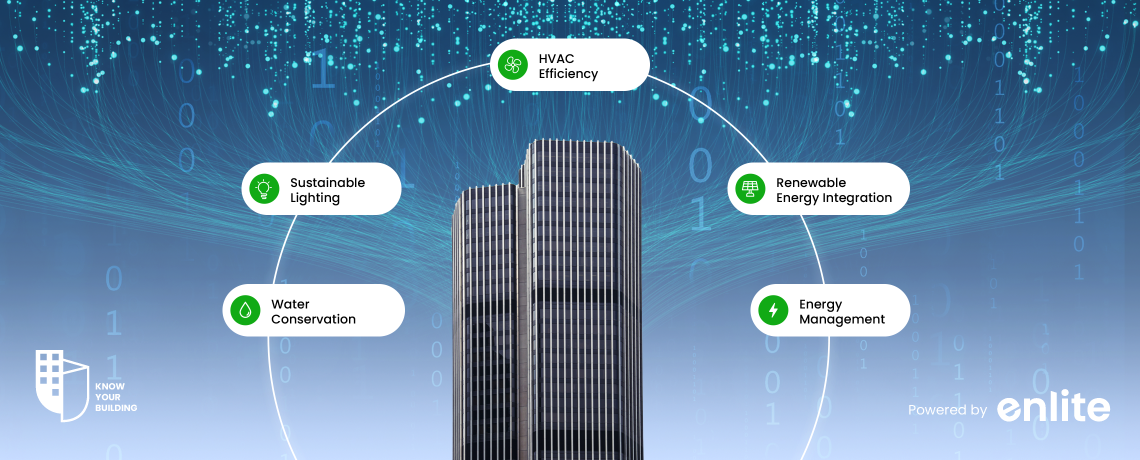As the world faces increasing environmental challenges and energy demands, the concept of smart buildings has emerged as a beacon of hope for achieving sustainability. At the heart of these smart buildings lies the Building Management System (BMS), a sophisticated technology designed to enhance energy efficiency and promote sustainable practices. In this blog, we will explore how BMS transforms traditional buildings into smart, energy-efficient, and sustainable structures.
What are Smart Buildings?
Smart buildings are structures that utilize advanced technology to monitor, control, and optimize various building systems. These systems include heating, ventilation, air conditioning (HVAC), lighting, security, and more. By integrating these systems into a centralized BMS, smart buildings can operate more efficiently, reduce energy consumption, and minimize their environmental impact.
The Role of BMS in Smart Buildings
A Building Management System (BMS) serves as the central nervous system of a smart building. It collects data from various sensors and devices, processes this information, and makes real-time adjustments to optimize building operations. Here’s how BMS enhances energy efficiency and sustainability in smart buildings:
1. Intelligent Energy Management
One of the primary functions of a BMS is to manage and control energy consumption. It achieves this through:
- Real-Time Monitoring: BMS continuously monitors energy usage across different systems and areas within the building. This real-time data allows for immediate adjustments to optimize energy use.
- Demand Response: BMS can participate in demand response programs, adjusting energy consumption during peak periods to reduce strain on the grid and lower energy costs.
- Automated Controls: By automating the operation of HVAC, lighting, and other systems, BMS ensures they run efficiently, only using energy when necessary. For example, lighting can be adjusted based on occupancy and natural light availability.
2. Enhanced HVAC Efficiency
Heating, ventilation, and air conditioning (HVAC) systems are major energy consumers in buildings. BMS enhances HVAC efficiency by:
- Temperature Control: BMS maintains optimal temperature levels, adjusting heating and cooling based on occupancy patterns and external weather conditions.
- Air Quality Management: It monitors indoor air quality and adjusts ventilation rates to maintain a healthy environment while minimizing energy use.
- Predictive Maintenance: BMS tracks the performance of HVAC equipment, predicting maintenance needs and preventing energy-wasting malfunctions.
3. Sustainable Lighting Solutions
Lighting is another significant energy consumer in buildings. BMS contributes to sustainable lighting through:
- Daylight Harvesting: By integrating with sensors that measure natural light levels, BMS can dim or switch off artificial lighting when sufficient daylight is available.
- Occupancy Sensors: These sensors detect the presence of people and adjust lighting accordingly, ensuring lights are not left on in unoccupied areas.
- Energy-Efficient Bulbs: BMS can manage the use of energy-efficient LED bulbs, further reducing energy consumption.
4. Renewable Energy Integration
BMS can integrate and manage renewable energy sources such as solar panels and wind turbines. This includes:
- Energy Storage Management: BMS optimizes the use of energy storage systems, ensuring that renewable energy is efficiently stored and used when needed.
- Grid Interaction: It facilitates the interaction between the building and the power grid, allowing for the sale of excess renewable energy back to the grid.
5. Water Conservation
In addition to energy efficiency, BMS also promotes water conservation by:
- Leak Detection: Advanced BMS systems like Know Your Building can detect water leaks in real-time, preventing water waste and potential damage.
- Smart Irrigation: BMS can manage irrigation systems, ensuring water is used efficiently based on weather conditions and soil moisture levels.
Know Your Building: Leading the Way in Smart Building Solutions
Know Your Building is a prime example of how innovative BMS technology can transform buildings into smart, sustainable structures. As the world’s first cloud-native wireless BMS, Know Your Building offers unparalleled features that enhance energy efficiency and sustainability:
- Wireless Technology: Simplifies installation and reduces infrastructure costs while providing flexibility in system configuration.
- Cloud-Native Platform: Allows for seamless data integration and real-time monitoring from any location, ensuring continuous optimization of building operations.
- Advanced Analytics: Provides actionable insights into energy consumption patterns, enabling precise energy management and cost reduction.
- Sustainability Features: Monitors carbon footprint and provides strategies to reduce emissions, contributing to a greener building operation.
Real-World Impact of Smart Buildings
The adoption of smart building technology is not just a futuristic concept; it’s happening now. Buildings equipped with advanced BMS like Know Your Building are reporting significant improvements in energy efficiency and sustainability. For example, a commercial office building utilizing Know Your Building saw a 25% reduction in energy consumption within the first year of implementation. Another example is a hospital that achieved a 30% decrease in water usage due to the system’s advanced leak detection and smart irrigation features.
Smart buildings represent the future of sustainable architecture, and at the core of these intelligent structures is the Building Management System. BMS plays a crucial role in enhancing energy efficiency, reducing operational costs, and promoting sustainability. With innovations like Know Your Building leading the way, the transition to smart, energy-efficient buildings is not just possible but also practical and highly beneficial.
As we move towards a more sustainable future, the integration of advanced BMS technology in our buildings will be key to achieving our energy efficiency and environmental goals. Embracing smart building solutions ensures a brighter, greener future for generations to come.














